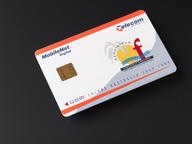

'Control indicator group' unit for mobile communications, 1985-2010
- Made:
- 1985-2010 in United Kingdom
- maker:
- Plessey Co. Limited






'Control indicator group' unit from Ptarmigan communications system used by the British Army, made by Plessey Limited, England, 1985-2010.
The British Army pioneered a mobile communications system called Ptarmigan, developed with the Plessey Company from 1973. Ptarmigan was a digital mobile telephone system that was fully movable so that transmitters and their ‘cells’ could be added or taken away to expand, shrink and move the network. All users were automatically registered on the system and switched between transmitters as they moved around the battlefield. Later developments enabled Ptarmigan to be used with satellite technology as well as fixed telephone networks.
Details
- Category:
- Telecommunications
- Object Number:
- L2014-4178
- Materials:
- paint, metal (unknown) and plastic (unidentified)
- Measurements:
-
overall: 240 mm x 260 mm x 250 mm,
- type:
- radio component
- copyright:
- Royal Signals Museum
- credit:
- Lent by the Royal Signals Museum, Blandford, Dorset




